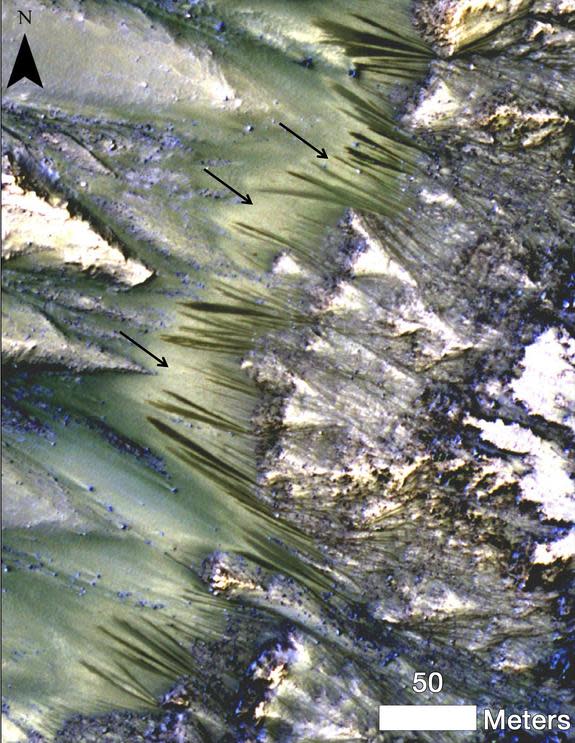 Science and Weather
Science and WeatherMartian microbes could sustain themselves on Red Planet air: study

The possibility of finding present day life on Mars may have just taken a dramatic step closer to reality, according to a new study indicating the current Martian atmosphere could sustain microbial communities.
Until today, studies have focused on liquid water as the main fuel source needed for any life form on the Red Planet. New findings published this week in the journal PNAS (Proceedings of the National Academy of Sciences), however, switch things up for astrobiologists, suggesting that carbon monoxide in Mars’ atmosphere could very well be the key energy source for bacteria-like life forms to eek out a living anywhere at or near the surface.
For years Mars scientists have speculated that whole microbial communities may have existed in the planet’s ancient past and possibly even today within briny pools trapped underneath the barren planet’s ice caps and soil. However the big unknown has always been what food source they would have access to.
As it turns out, all that carbon dioxide-rich gas in the planet’s atmosphere naturally produces carbon monoxide (CO) as sunlight breaks off an oxygen atom off the carbon dioxide. The resulting small amount of CO can actually seep into the ground and become the energy source needed for life to feed off of.
The researchers at Louisiana State University argue that there are locations right here on Earth that are very Mars-like and harbour just such weird lifeforms. To prove their point, they took soil samples from places in California, Utah and Hawaii and subjected them to carbon monoxide and found that there was a natural seepage of the gas into the soil—enough to support any hungry colonies of exotic microbial life.
What makes this finding all the more exciting is that it may help explain some of the bizarre, narrow, dark-toned streaks observed in recent years by NASA’s Mars Reconnaissance Orbiter. At least on local scales, these dark, finger-like markings on steep slopes may represent martian brines, features thought to form seasonally. They are seen to appear during late spring through summer and then fade away during winter time.
While these features are still a mystery, they are the closest we have come to finding clear evidence of liquid water existing on present day Mars.
The big hitch with this carbon monoxide muting microbe study is that this all remains theory—at least for now. The current working Martian rovers, Opportunity and Curiosity, are both robotic geologists that are just not equipped to detect lifeforms and are not even in the right geographical locations where experts believe these salty pools of life may be hiding.
But NASA is planning an exciting mission to launch early in the next decade that may very well give us the final answer.
The mission is called Icebreaker Life and would be a fixed lander—a near physical copy of the 2008 Phoenix lander—that would be equipped with a drill that could bore into the Martian ice cap and suck up any biomolecules and even life itself. This would be the ultimate test of these theories any may conclusively answer once and for all if Mars ever had or still does host life.

